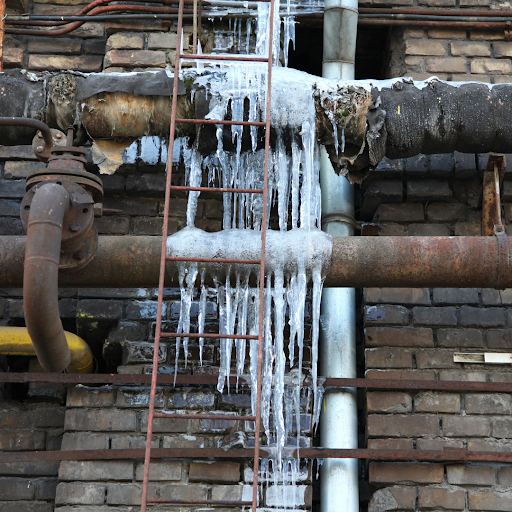How to Protect Pipes from Cold Weather Issues: Essential Tips
How to Protect Pipes from Cold Weather Issues: Essential Tips
Blog Article
In this article on the next paragraphs you will find a lot of first-rate news concerning Prevent Frozen Pipes .

Winter can ruin your plumbing, specifically by freezing pipes. Below's exactly how to prevent it from happening and what to do if it does.
Intro
As temperatures drop, the threat of frozen pipelines rises, possibly resulting in pricey fixings and water damage. Recognizing how to stop icy pipes is essential for property owners in cold environments.
Recognizing Icy Pipelines
What triggers pipelines to freeze?
Pipes freeze when revealed to temperature levels below 32 ° F (0 ° C) for prolonged periods. As water inside the pipelines ices up, it increases, taxing the pipeline wall surfaces and potentially creating them to break.
Dangers and damages
Icy pipes can cause water system interruptions, home damages, and expensive repairs. Ruptured pipelines can flood homes and create extensive architectural damages.
Indications of Frozen Water Lines
Determining icy pipes early can stop them from rupturing.
How to recognize icy pipelines
Seek decreased water flow from taps, unusual smells or sounds from pipes, and noticeable frost on subjected pipes.
Prevention Tips
Insulating prone pipelines
Wrap pipelines in insulation sleeves or make use of warmth tape to protect them from freezing temperature levels. Focus on pipelines in unheated or exterior areas of the home.
Home heating methods
Keep indoor areas adequately warmed, particularly locations with plumbing. Open up cupboard doors to enable warm air to flow around pipelines under sinks.
Securing Outdoor Pipes
Yard hoses and outside taps
Detach and drain garden pipes prior to winter season. Install frost-proof spigots or cover exterior faucets with protected caps.
What to Do If Your Pipelines Freeze
Immediate activities to take
If you think frozen pipes, maintain taps open up to relieve pressure as the ice thaws. Make use of a hairdryer or towels taken in hot water to thaw pipes slowly.
Long-Term Solutions
Structural modifications
Think about rerouting pipelines far from exterior walls or unheated areas. Include added insulation to attics, cellars, and crawl spaces.
Updating insulation
Buy high-quality insulation for pipelines, attics, and wall surfaces. Appropriate insulation assists preserve consistent temperature levels and lowers the threat of frozen pipes.
Verdict
Avoiding frozen pipelines requires positive steps and quick responses. By comprehending the reasons, indications, and preventive measures, home owners can safeguard their plumbing during cold weather.
5 Ways to Prevent Frozen Pipes
Drain Outdoor Faucets and Disconnect Hoses
First, close the shut-off valve that controls the flow of water in the pipe to your outdoor faucet. Then, head outside to disconnect and drain your hose and open the outdoor faucet to allow the water to completely drain out of the line. Turn off the faucet when done. Finally, head back to the shut-off valve and drain the remaining water inside the pipe into a bucket or container. Additionally, if you have a home irrigation system, you should consider hiring an expert to clear the system of water each year.
Insulate Pipes
One of the best and most cost-effective methods for preventing frozen water pipes is to wrap your pipes with insulation. This is especially important for areas in your home that aren’t exposed to heat, such as an attic. We suggest using foam sleeves, which can typically be found at your local hardware store.
Keep Heat Running at 65
Your pipes are located inside your walls, and the temperature there is much colder than the rest of the house. To prevent your pipes from freezing, The Insurance Information Institute suggests that you keep your home heated to at least 65 degrees, even when traveling. You may want to invest in smart devices that can keep an eye on the temperature in your home while you’re away.
Leave Water Dripping
Moving water — even a small trickle — can prevent ice from forming inside your pipes. When freezing temps are imminent, start a drip of water from all faucets that serve exposed pipes. Leaving a few faucets running will also help relieve pressure inside the pipes and help prevent a rupture if the water inside freezes.
Open Cupboard Doors
Warm your kitchen and bathroom pipes by opening cupboards and vanities. You should also leave your interior doors ajar to help warm air circulate evenly throughout your home.

As an enthusiastic reader on Helpful Tips to Prevent Frozen Pipes this Winter, I imagined sharing that article post was really useful. Loved our blog entry? Please quickly share it. Help someone else locate it. I enjoy reading our article about 6 Ways to Prevent Frozen Pipes.
Schedule Service Now Report this page